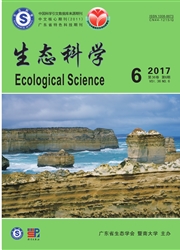

 中文摘要:
中文摘要:
将Bt水稻(b2B138)和常规水稻(安丰A)秸秆平铺在装有20 cm厚土壤的塑料面包箱上,并加入一定量的腐秆剂,研究Bt水稻秸秆覆盖还田对土壤养分含量的影响,同时探讨腐秆剂在此过程中的作用。结果表明,与常规水稻秸秆还田相比,无论有无腐秆剂的加入,Bt水稻秸秆还田120 d和180 d后均能显著增加土壤速效钾含量,但无腐秆剂加入时,Bt水稻秸秆还田120 d后土壤全氮含量明显下降,Bt水稻秸秆还田对土壤有机质、碱解氮、速效磷、全磷和全钾含量则没有显著影响。腐秆剂的加入使得Bt水稻秸秆还田120 d后土壤速效钾含量明显提高,常规水稻秸秆还田180 d后土壤速效磷含量也显著提高,对其他养分指标则没有明显影响。
 英文摘要:
英文摘要:
Straws of Bt rice varieties b2B138 and conventional rice varieties Anfeng A were placed onto a plastic box with 20 cm height soil before straw decayed bacterium were added, so as to investigate the effects of Bt rice straws returning on the soil nutrients and the roles of straw decayed bacterium playing during the decomposition processes. The results showed that as compared to the returning of conventional rice straws, the returning of Bt rice straws to soil for 120 days and 180 days could significantly increase the available K content in soil, no matter with or without the addition of straw decayed bacterium. Without the addition, total N content in soil was obviously reduced after 120 days, but the Bt rice straw returning had no clear effects on the contents of organic matter, alkaline hydrolytic N, available P, total P or total K. The addition of straw decayed bacterium increased the available K in soil after Bt rice straw returning to the soil for 120 days; it also increased the available P in soil after conventional rice straw returning to the soil for 180 days, but it had no significant effects on the other soil nutrients.
 同期刊论文项目
同期刊论文项目
 同项目期刊论文
同项目期刊论文
 Effects of cultivation and return of Bacillus thuringiensis (Bt) maize on the diversity of the arbus
Effects of cultivation and return of Bacillus thuringiensis (Bt) maize on the diversity of the arbus 期刊信息
期刊信息
